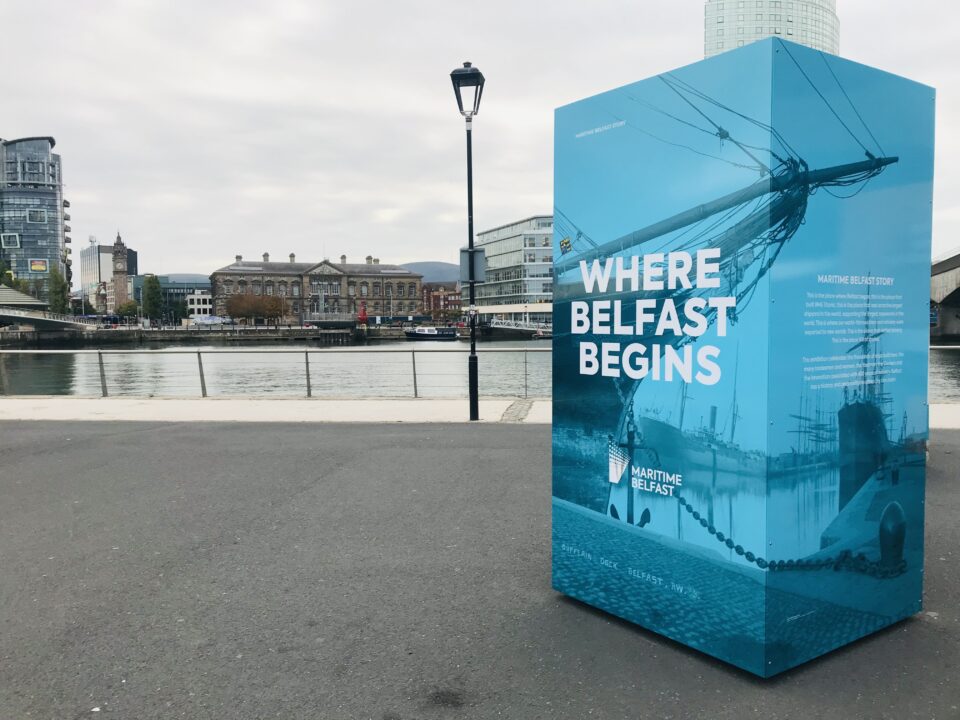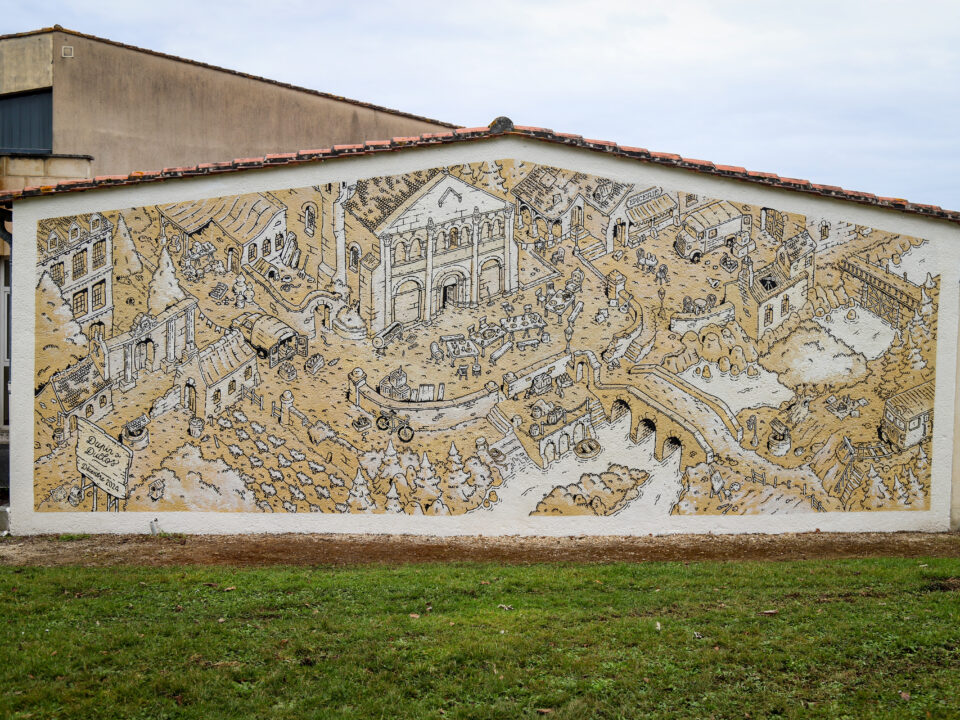

Belfast: the Maritime Mile
Belfast (Northern Ireland) is a medium-sized capital city with significant experience in community engagement and regenerative urban activities. Building on a complex history – with recent and historic political uncertainties (from the 30 year long ‘troubles’ (1960-90ies) to a period without government (2017-18) to developing into a Smart City (Smart Belfast)). This is further underpinned by the recent launch of Innovation City Belfast which seeks to build on Belfast’s foundations as a city of creators and inventors and establish Belfast as a globally-significant destination for innovation.
The Historic Urban Area (HUA) concerned by the HUB-IN project reflects this progress – previously an industrial epicentre built on reclaimed land, the city’s waterfront is one of the largest waterfront regeneration sites in Europe. The area provides Belfast with an opportunity to grow the population through new residential developments, increased economic prosperity through new office accommodation and develop a unique and authentic leisure and recreation destination for locals and visitors showcasing 400 years of history, including the birthplace of RMS Titanic. As such, one of their key hopes for the project is that it builds on past and existing work, aligns/integrates with ongoing initiatives, and reinforces existing partnerships, to develop a vibrant waterfront that boosts sustainable tourism and shapes new creative and digital sectors, in which citizens have a meaningful sense of ownership, agency and participation.
The city sees the project as an opportunity to join up and strengthen the connections between the different sectors based in the HUA and the local community and develop an iconic and authentic waterfront experience for local people and visitors!
Brasov’s City Centre
Brasov (Romania) aims to find/create a balance between old and new, that inspires and learns, the new from the old & the old from the new, in a two-way dialogue.
On the one hand, the project provides an opportunity to build on and strengthen its identity and rich local heritage by driving more awareness of the city’s attractions, events and traditions, such as Junii Brasovului Festivities. As well, Brasov is one of the greenest cities in Romania (being surrounded by the Carpathian Mountains) and has a strong commitment to sustainable development through its dedication to nature.
On the other hand, the project promises new initiatives that could help the city to work towards long term objectives around energy transition and climate neutrality, whilst developing a revitalised tourism offer and new, green city services that don’t overwhelm the city centre.
As with all of the cities, Brasov is concerned about pandemic-related uncertainty and its potential impact on the project’s relevance going forward. For this reason, the city is excited to learn side-by-side with partner cities to see how delicate balances and engagement has been achieved and managed elsewhere.
Genova: the Caruggio Dritto district
Genova’s Caruggio Dritto is a very dense and heterogeneous territory on multiple levels: social, cultural and economic. The opportunity HUB-IN can provide is to create a network between the different actors operating in the area: from traders, to start-ups, to small businesses, through SME testbeds and supporting local businesses. To be an incentive for creative businesses, and more indirectly try to capitalize on previous experiences already developed in the area – with focus on local regeneration, bring new investment, increasing awareness of local heritage and increase liveability in the area, as well as establishing new activities, such as re-activating under used spaces and attracting sustainable tourism.
The main challenge today is to fight decay in all its forms – physical, social, and economic – reversing/counteract tendencies of mistrust, fragmented relationships with locals, micro-criminality, and organised crime. Rather than duplicating work, the focus needs to be on promoting actions that can have positive effects, such as updating our common vision (on sustainable regeneration of our
heritage), strengthening local bonds by enhancing existing networks and engaging informal groups. This will bring fresh ideas, new energy, new participants, that can close the gap between theory and practise and provide tangible action on how to do this in (our current) reality.
The urban regeneration process can be implemented through an integrated urban development approach or by specific interventions. The Municipality is already implementing various specific actions to promote the improvement of the area, the next step is the adoption of a programme of an integrated nature, comprising actions and projects that at the same time tackle physical, social and economic conditions. The pandemic has made it even more urgent to engage vulnerable groups.
Responding (and informing) effectively changes the political agenda. An efficient urban policy and a strategic-oriented approach can revitalize the urban context and convert its decline into new sustainable growth and ensure lasting effects, increase interest and attract investment.
Angoulême: the Charente River area
Angoulême is a relatively small but historically significant city with a strong desire to ensure project objectives, processes and outcomes are appropriated by the city’s inhabitants. There is a hope for the project to build on and learn from a variety of existing partnerships, share local ways of working and ultimately to realise objectives on a European scale. For the city, the potential for partnerships goes beyond Europe, to include global work concerning the development of creative industries and cultural hubs, such as with an ongoing, close cooperation with the city of Zapopan in Mexico (funded by French and Mexican Ministries for foreign affairs).
The city perceives limited resources to represent a key project challenge, which heightens the imperative to create a sense of ownership among the citizens of Angoulême. The sanitary situation due to Covid-19 requires the reinvention of parts of working methods as well as the ‘real-life’ practices for inhabitants in their experience of the pilot.
Building EU learnings and Partnership is one of Angoulême’s core hopes (as they are fresh to the EU H2020 ecosystem). Exchanges of know-how and experiences between partners, as well as learning from the other HUAs and sharing local ways of working is of great value, so is the implication of partners on a European scale.
Find out more in HUB-IN “Current Landscapes” report
Want to know about the other pilot areas of the project? Read this article




